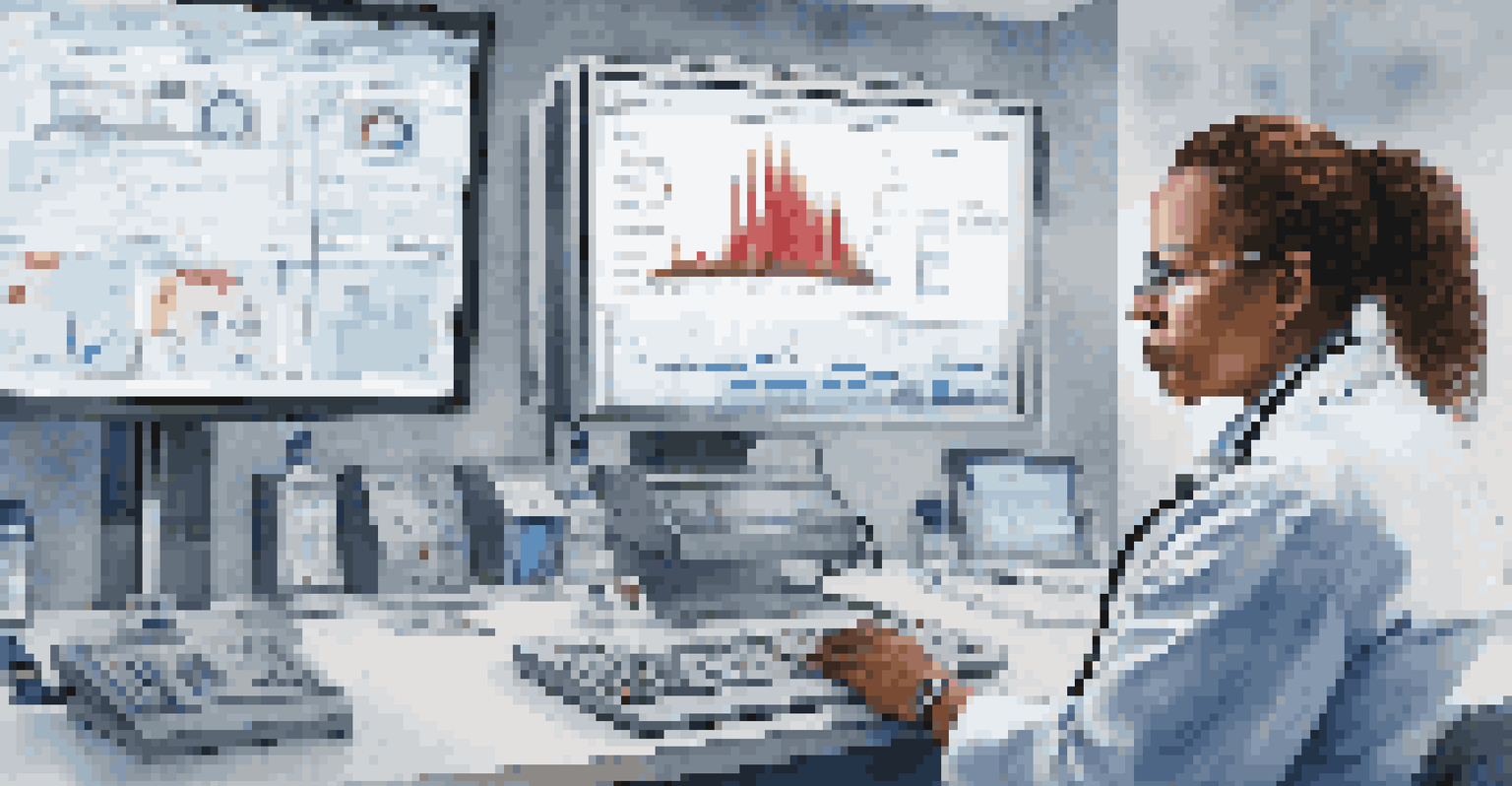Telemonitoring: Real-Time Health Insights for Patients

What is Telemonitoring and Why It Matters
Telemonitoring is a technology-driven approach that allows healthcare providers to monitor patients' health data in real-time. This method is particularly beneficial for those with chronic conditions, enabling timely interventions. Imagine having a virtual health assistant that keeps an eye on your vital signs while you go about your daily life.
The greatest wealth is health.
By utilizing devices like blood pressure monitors and glucose sensors, patients can transmit their health information directly to their healthcare teams. This not only enhances the quality of care but also empowers patients to take charge of their health. It's like having a personal trainer who is always there, guiding you toward better health choices.
As telemonitoring continues to evolve, it opens up new avenues for personalized medicine. Providers can tailor treatments and recommendations based on real-time data, leading to improved outcomes and overall patient satisfaction. Ultimately, this means that patients get the right care at the right time, making their health journey smoother.
Benefits of Telemonitoring for Patients
One of the most significant advantages of telemonitoring is the convenience it offers. Patients can check their health from the comfort of home, reducing the need for frequent office visits. This is especially helpful for those with mobility issues or those living in remote areas, akin to having a doctor on speed dial.

Moreover, telemonitoring promotes proactive healthcare. By continuously tracking vital signs, potential health issues can be detected early, allowing for prompt action. It's like having a smoke alarm in your home; it alerts you to problems before they escalate into emergencies.
Telemonitoring Enhances Patient Care
This technology allows real-time health monitoring, empowering patients and enabling timely interventions.
Additionally, patients often report feeling more engaged in their healthcare journey. With access to their health data, they can better understand their conditions and make informed decisions. This empowerment fosters a collaborative relationship between patients and providers, ultimately leading to better health outcomes.
How Telemonitoring Works: The Technology Behind It
Telemonitoring relies on a variety of devices that collect health data, such as heart rate, blood pressure, and glucose levels. These devices are equipped with sensors that can transmit data wirelessly, often using secure internet connections. Picture it like sending a text message; your health information is shared instantly and securely.
Technology is best when it brings people together.
Once the data is collected, it is sent to healthcare providers for analysis. Many systems use software platforms that can flag any anomalies or trends that may require attention. It's similar to having an alert system that notifies you when something needs your immediate focus.
Finally, healthcare professionals can respond to the data in real-time, offering guidance, adjustments to medications, or even scheduling further tests as needed. This seamless communication ensures that patients receive timely interventions, enhancing the overall effectiveness of their care.
Challenges and Limitations of Telemonitoring
While telemonitoring offers numerous benefits, it is not without its challenges. One significant hurdle is the reliance on technology, which can be daunting for some patients, especially the elderly. For many, adapting to new devices can feel like learning a new language, which can be frustrating.
Additionally, consistent access to reliable internet and power sources is crucial for effective telemonitoring. In rural areas or homes with unstable connections, the technology may not function as intended. This can lead to gaps in data collection, akin to trying to watch your favorite show with a poor signal.
Convenience for Chronic Disease Management
Telemonitoring minimizes the need for frequent in-person visits, making healthcare more accessible for those with chronic conditions.
Finally, there are privacy concerns regarding the security of health data. Patients need reassurance that their information is safe from breaches. As healthcare moves into a more digital space, maintaining trust through robust security measures is essential for the success of telemonitoring.
The Role of Healthcare Providers in Telemonitoring
Healthcare providers play a crucial role in the success of telemonitoring. They must be trained to interpret the data effectively and communicate findings to patients in an understandable manner. Imagine a coach who not only understands the game but can also explain strategies clearly to their team members.
Providers also need to establish protocols for responding to the data collected. This ensures timely interventions when patients' readings fall outside of normal ranges. It’s like having a game plan that outlines how to react when unexpected situations arise during a match.
Moreover, the relationship between patients and providers can be strengthened through telemonitoring. Regular communication about health data can foster trust and engagement, making patients feel supported on their health journeys. This partnership can lead to more personalized care and improved health outcomes.
Telemonitoring and Chronic Disease Management
Telemonitoring is particularly transformative for patients managing chronic diseases such as diabetes, hypertension, or heart disease. These conditions often require continuous monitoring, and telemonitoring provides a solution that minimizes the burden on patients. It’s like having a safety net that catches potential problems before they turn into serious issues.
For instance, diabetics can regularly monitor their blood glucose levels without constant trips to the clinic. This immediate feedback allows them to make real-time adjustments to their diet or medication. The convenience of this approach can lead to better adherence to treatment plans, much like a student who stays on top of their assignments.
Future Innovations in Telemonitoring
Advancements in AI and new monitoring devices promise to make telemonitoring more effective and widely available.
Furthermore, telemonitoring can enhance collaboration among healthcare teams. By sharing patient data across disciplines, providers can develop comprehensive care plans that address all aspects of a patient’s health. This holistic approach can significantly improve quality of life and disease management.
The Future of Telemonitoring: What Lies Ahead
As technology continues to advance, the future of telemonitoring is promising. Innovations such as artificial intelligence and machine learning are beginning to play a role in analyzing health data more effectively. Imagine having a super-smart assistant that can identify trends and provide recommendations based on your health data.
Moreover, we can expect an increase in the variety of devices available for telemonitoring. From wearable fitness trackers to advanced diagnostic tools, patients will have more options for monitoring their health. This expansion can lead to greater accessibility, allowing more people to benefit from these technologies.

Finally, as telemonitoring becomes more integrated into standard healthcare practices, we may see a shift toward more preventive care. By focusing on maintaining health rather than just treating illness, telemonitoring can contribute to a healthier population overall. This proactive approach is akin to a gardener tending to their plants regularly to prevent pests rather than waiting until the garden is overrun.